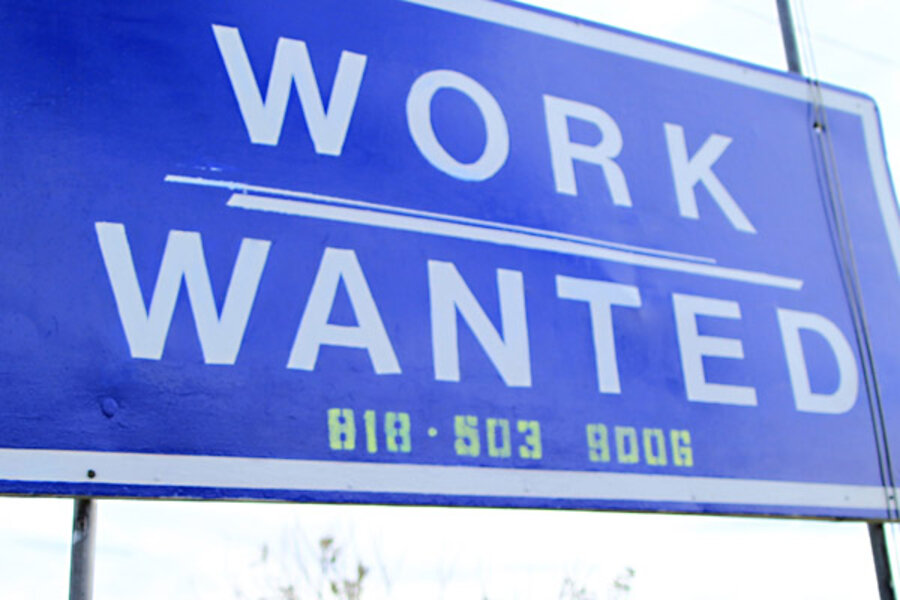This last indicator is really one of what's called "under-employment," not outright joblessness. But it's important, because the recession caused a big jump in the number of people not working as many hours each week as they would like.
The Labor Department survey of households tracks the number of people working part-time "for economic reasons," meaning they hope to work full time (or at least longer hours than they currently do).
This number stood at 9 million in November 2010.
Final bonus: For some visual guides to the overall labor market, both nationally and in individual states, here's a link to charts tracking job growth, from the Federal Reserve Bank of Minneapolis.
The charts offer some trend lines of growth or decline to look at. Once at the website, click the tab "length of recessions" to see nationwide data, or "recession by state" for the localized data. (It's interactive: By clicking your state on a map, the chart will change to show that state.)

Lucy Nicholson/Reuters
A day laborer site in Los Angeles. The rate of 'underemployment' is important because the recession caused a big jump in the number of people working less hours than they would like.




